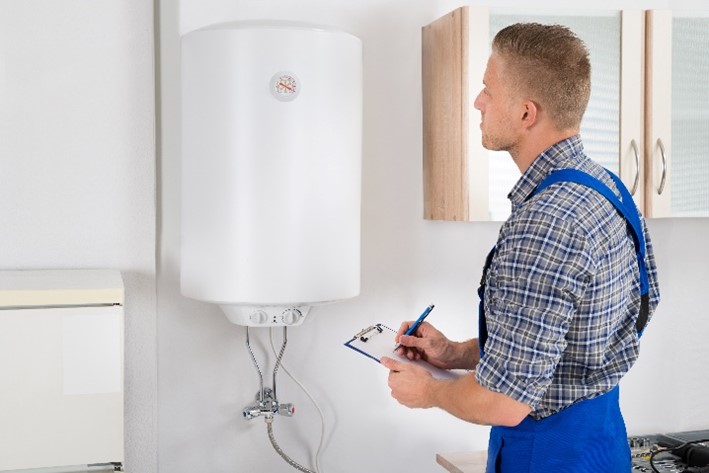Essential Care Techniques for Your Home's Hot Water SystemEssential Tips on Maintaining Your Home's Hot Water System
Essential Care Techniques for Your Home's Hot Water SystemEssential Tips on Maintaining Your Home's Hot Water System
Blog Article
Everyone seems to have their unique perception involving Tips on Maintaining a Water Heater.

Hot water is vital for everyday convenience, whether it's for a rejuvenating shower or cleaning dishes. To ensure your warm water system runs successfully and lasts much longer, regular maintenance is essential. This write-up gives practical suggestions and understandings on exactly how to keep your home's warm water system to avoid disruptions and expensive repair services.
Introduction
Maintaining your home's hot water system might appear overwhelming, but with a couple of straightforward actions, you can guarantee it runs efficiently for several years ahead. This overview covers whatever from comprehending your hot water system to DIY upkeep suggestions and recognizing when to contact professional aid.
Value of Preserving Your Hot Water System
Normal maintenance not only expands the life expectancy of your hot water system yet also guarantees it runs efficiently. Disregarding maintenance can result in lowered effectiveness, higher power bills, and also early failing of the system.
Indicators Your Hot Water System Requirements Upkeep
Knowing when your warm water system requires attention can stop major concerns. Keep an eye out for signs such as inconsistent water temperature, odd noises from the heating system, or rusty water.
Flushing the Water Heater
Flushing your water heater eliminates sediment build-up, improving efficiency and extending its life.
Checking and Changing Anode Rods
Anode poles prevent rust inside the container. Examining and changing them when worn out is vital.
Facility Problems Calling For Expert Help
Examples include major leakages, electrical issues, or if your hot water heater is continually underperforming.
Regular Specialist Upkeep Benefits
Expert upkeep can consist of detailed evaluations, tune-ups, and guaranteeing conformity with safety and security criteria.
Examining and Adjusting Temperature Setups
Readjusting the temperature settings makes sure ideal performance and security.
DIY Tips for Maintenance
You can carry out a number of maintenance tasks on your own to maintain your warm water system in leading problem.
Checking for Leaks
Frequently evaluate pipes and connections for leaks, as these can cause water damages and greater bills.
Understanding Your Hot Water System
Prior to diving right into upkeep jobs, it's helpful to comprehend the standard elements of your warm water system. Normally, this consists of the water heater itself, pipes, anode rods, and temperature level controls.
Month-to-month Maintenance Tasks
Routine month-to-month checks can aid capture small concerns prior to they rise.
Testing Pressure Relief Valves
Examining the stress safety valve ensures it works correctly and stops too much stress build-up.
Protecting Pipes
Shielding warm water pipelines decreases heat loss and can save power.
When to Call a Professional
While DIY upkeep is helpful, some problems require professional expertise.
Conclusion
Normal upkeep of your home's warm water system is crucial for effectiveness, durability, and cost financial savings. By adhering to these pointers and recognizing when to look for expert assistance, you can make certain a trusted supply of warm water without unexpected disruptions.
How to Maintain an Instant Hot Water Heater
Before tinkering with your hot water heater, make sure that it’s not powered on. You also have to turn off the main circuit breaker and shut off the main gas line to prevent accidents. Also turn off the water valves connected to your unit to prevent water from flowing into and out of the appliance. 2. When you’re done, you have to detach the purge valves’ caps. These look like the letter “T” and are situated on either side of the water valves. Doing so will release any pressure that has accumulated inside the valves while at the same time avoid hot water from shooting out and burning your skin. 3. When the purge valves’ caps are removed, you have to connect your hosing lines to the valves. Your unit should have come with three hoses but if it didn’t, you can purchase these things from any hardware or home repair shops. You can also get them from retail stores that sell water heating systems. Read the user’s manual and follow it to complete this task properly. When the hosing lines are connected, open the purge port’s valves. 4. You should never use harsh chemical cleaners or solutions when cleaning your unit. Make use of white vinegar instead. It should be undiluted and you’ll probably use about 2 gallons. 5. Now flush your water heater. This task should probably take about 40 minutes. We can’t give you specific directions for this because the procedure is carried out depending on the type, model and brand of your heater. With that being said, refer to the user’s manual. 6. When you’re done draining the unit, you have to turn off the purge port valves again. Remove the hosing lines that you earlier installed on each of the water valves. Put the valve caps (purge port) back in their respective places and be very careful so as not to damage the rubber discs that are found inside these caps. 7. Now that everything’s back in place, check your user’s manual again to find out how to reactivate your water heating system. 8. Once it is working, turn one of your hot water faucets on just to let air pass through the heater’s water supply pipes. Leave the tap on until water flows smoothly out of it. https://www.orrplumbing.com/blog/2014/september/how-to-maintain-an-instant-hot-water-heater/

As a passionate reader about How to Maintain a Hot Water Heater in a Few Simple Steps, I figured sharing that chunk was smart. Enjoyed our write-up? Please quickly share it. Help others check it out. We take joy in your readership.
About Report this page